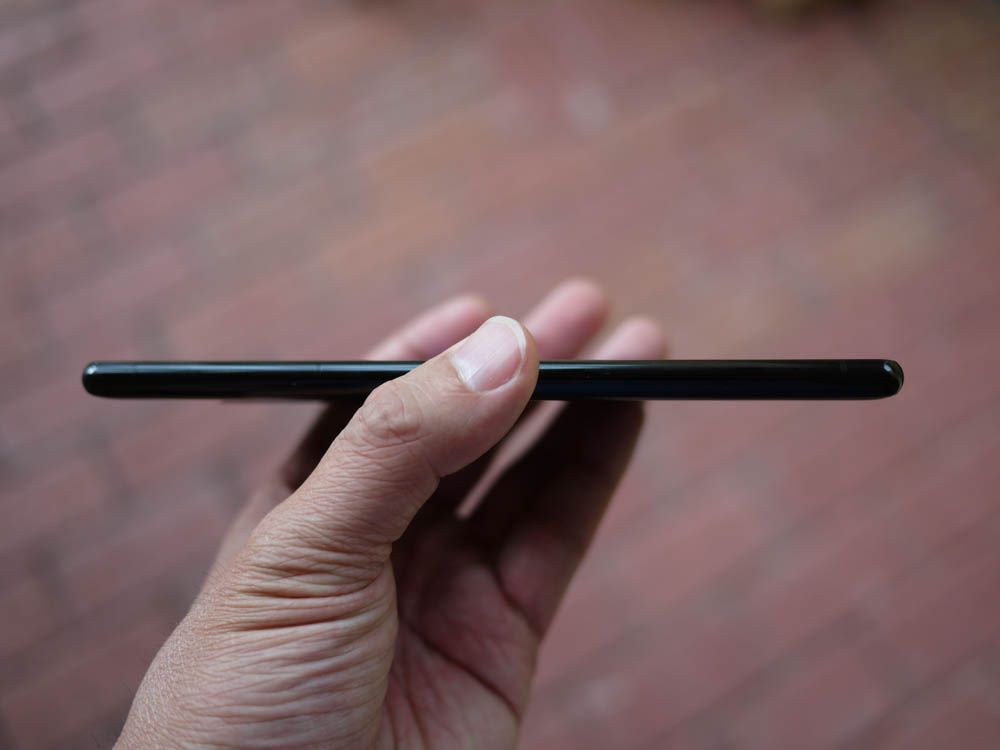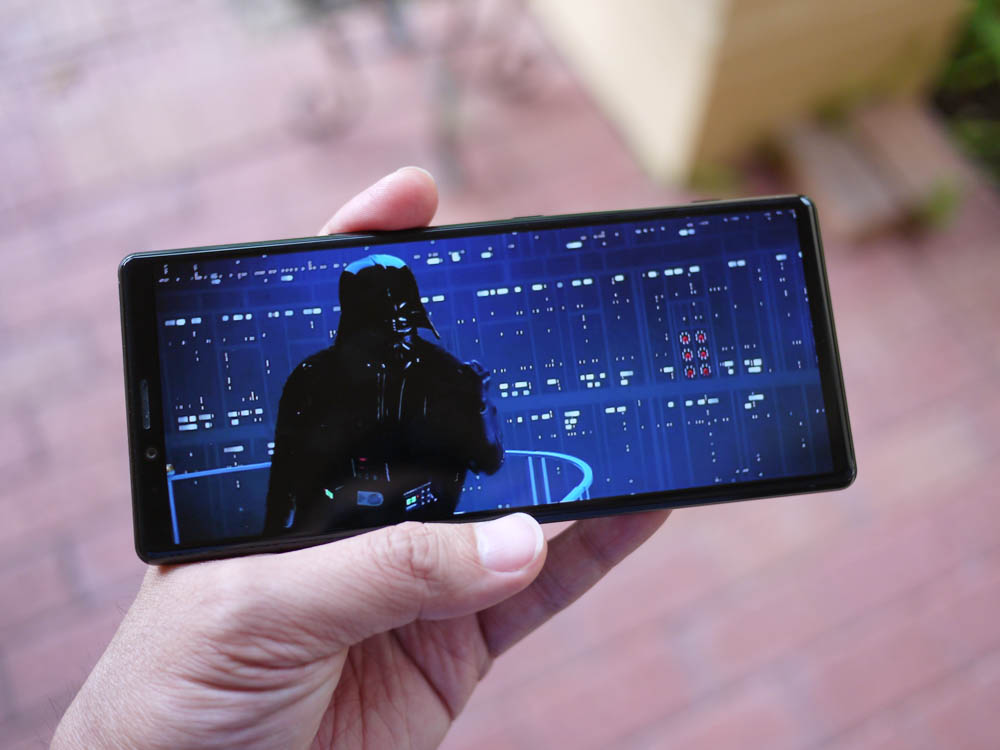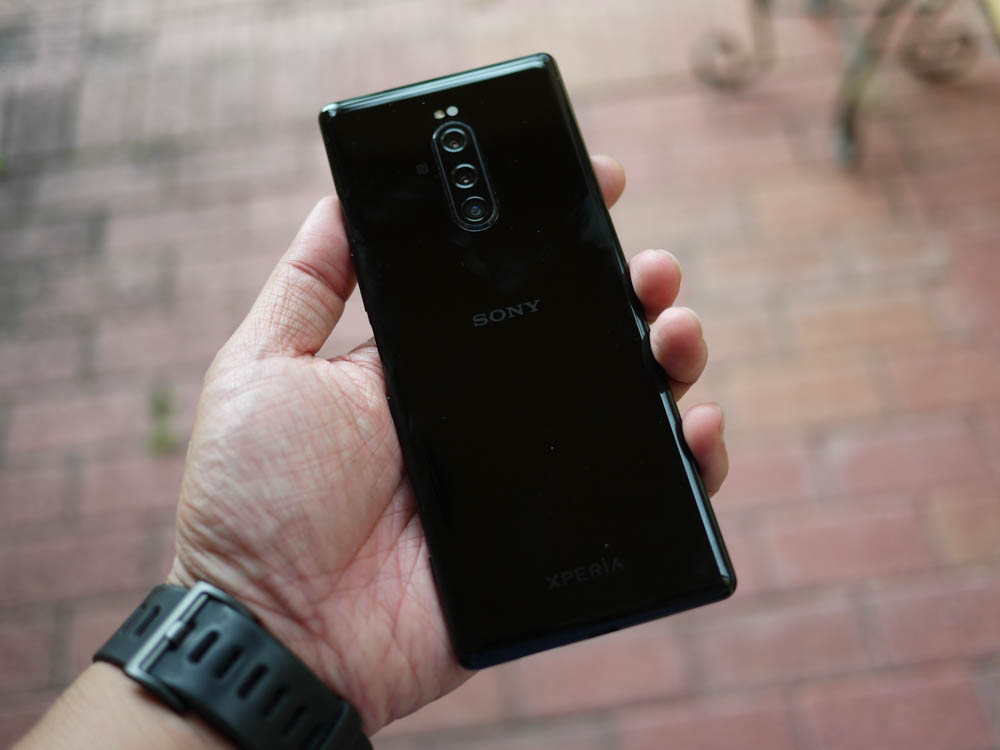
A few weeks ago, I received Sony’s latest flagship Android based smartphones, the Sony Xperia 1. I wrote up a little first impressions post about it since I hadn’t had enough time yet with the phone to make a full review. A week later, I think I’ve had enough time to give my two cents and most of my first impressions still hold up. However there are some things that have changed since spending more time with the Xperia 1. Read on to find out what the same and what’s changed and how I finally feel about Sony latest.
Disclaimer: The Xperia 1 device I am currently testing was sent to me by Sony’s PR team on a 60 day loan and I am testing it with my own personal AT&T sim card.

Design
What makes the Sony Xperia 1 different from every other current Android phone out there is the unusually tall aspect ratio of 21:9. While not that much different design wise to previous Sony devices like the Xperia XZ2, the phone looks extra tall and narrow. The narrower body makes it much easier to hold in my opinion but the extra tall screen makes one handed use a bit tricky with items at the top of the screen.
Speaking of how it feels to hold, it’s actually really comfortable in your hands and doesn’t have any sharp corners anywhere that could poke your palms. However, the all glass construction and the glossy meta frame makes the Xperia 1 incredibly slippery. I would recommend some kind of case to use with it as it’ll make the phone much easier to hold while also protecting all the glass. And protect it you’ll want to because without a case, I’m already starting to see little tiny surface scratches on the back glass, probably due to having it rub up against harsh surfaces.

I’m also not pleased with the placement of the fingerprint reader on the Xperia 1. Previous Xperia devices had the fingerprint reader on the rear of the device which to me was the perfect place for one. Now that it’s on the side, it makes it a bit more difficult to to use properly. It’s placed in such a way where it’s a little too easy to touch with your thumb and often times you’ll be unlocking your device when you don’t want to or attempting to unlock it and it’ll tell you that you’ve tried too many times and keeps you from unlocking it. Not only that, it just doesn’t seem to be as accurate.
Accidental button presses can also occur, mainly with the dedicated camera button where you’ll be constantly launching the camera by accident. To prevent this, I turned off the button as a shortcut and only have the button enabled when the camera app is open and use it as a shutter release button.
You’ll notice that there also is no longer an audio jack on the Xperia 1. While the Xperia 10 had one, a mid-range device with the same form factor as the Xperia 1, the Xperia 1 now relies on either you using a Bluetooth audio device or a USB-C dongle, which is included in the box. While it doesn’t bother me as I’ve been exclusively using Bluetooth headphones for several years now, I know it’s still a big sore spot among users.
Lastly, some things I do like about the design however is the use of a sim card/memory card tray that doesn’t require a tool you can lose. I’m also a big fan of the dual speakers which give you stereo sound when playing games or watching movies. These speakers are also very loud unlike some other phones I’ve used.

Specs
The Sony Xperia 1’s spec sheet reads like a Who’s Who of flagship devices. The specs that matter are the following:
- Google Android 9.0 Pie
- Qualcomm Snapdragon 855 Mobile Platform
- 6GB RAM
- 128 GB ROM
- 3,330 mAh Battery
- 6.5″ 4K HDR OLED (1644×3840) Display
- Triple Lens Main Camera (1x, 2x, and super wide)
- 8MP Selfie Cam
- Stereo Speakers
- Dolby Atmos
- Qualcomm aptX HD audio
- Bluetooth 5.0 wireless technology
- PS4 Remote Play
- Water resistant (IP65/68)
- Corning GorillaGlass 6
For the most part, you’ll find almost the same exact specs on all other 2019 model flagships with maybe a few differences here and there. Average users probably won’t even notice the subtle differences in RAM or camera quality. What you will notice is that the Xperia 1 is no slouch and handles most apps with ease. This includes even the most demanding of games.
The battery here is also a step up from the mid-range Xperia 10 models and comes with a 3,330 mAh battery which in my tests so far, can last an entire day of normal usage. If you’re a heavy app user, photo taker, social media sharer, or gamer, you will need to recharge during the day, but it all depends on the apps you’re using. Some apps eat up more power than others. If you use the included fast charger, you can charge up to 50% battery charge in 30 minutes.
Lastly, loving the fact that the Xperia 1 includes stereo speakers. When in landscape mode, one speaker is on the left and the other is on the right. That’s how speakers should be on a phone, not just one speaker facing the bottom. This also has some crazy thing called Dynamic Vibration System that will vibrate music of videos based on the sound that’s being produced.

Software
While much of the software here was present on the Xperia 10 and Xperia 10 Plus, the Xperioa 1 doesn’t suffer from many of the issues I had with those devices. In fact, the Xperia 1 doesn’t seem to have any of those issues. But more on that in a bit.
The Xperia 1 comes out of the box with Android 9.0 Pie. That’s pretty much the most up-to-date Android build you’re going to get these days. It’s fast but does have Sony’s own custom launcher attached to it. The main addition that the launcher adds is called “Side Sense.” Side Sense allows you to double tap the side of the screen to bring up a shortcut menu with favorite apps, multi-window shortcut, and other important shortcuts. It’s kind of neat to use, but most likely you’ll have to adjust the placement of the shortcut as well as the sensitivity of how it launches. I didn’t really find Side Sense all that useful and ended up just turning it off after a few days.
For those who like double tapping the screen to view their notifications on the lock screen, you can do that too with the Xperia 1. It’s a feature you can turn on and off.
What is lacking however, is true face unlocking. What I mean by that is that it isn’t as advanced or as accurate as it is on other Android devices. You can enable a face unlock feature via the Smart Lock section in the settings and adding a Trusted Face. However, to unlock your phone with it, you’ll first need to activate the lock screen, look at the camera, and when it recognizes your face, swipe up to unlock to your home screen. This obviously is not as good as just picking up your phone and having it recognize your face and automatically turning on, unlocking, and taking you to your home screen.
Also, Sony has done away with custom themes that it once had on previous Xperia devices. Themes used to be a fantastic way to customize the look of your Xperia devices, but apparently Sony says not many people were actually making use of them so they’ve been discontinued.
Because the Sony Xperia 1 is an unlocked devices and isn’t tied to a carrier, it does not come with much in terms of bloatware. Most of the apps included are stock Google apps with some Sony apps thrown in.
Of note, Sony’s Xperia line are still the only Android devices that can do PS4 Remote Play out the box if they are flagships. The Xperia 1 is so it can Remote Play.

Cameras
The Sony Xperia 1 follows a lot of trends here with its camera setup. The main camera features a triple lens array, each at 12MP. There’s a f/1.6, 26mm, 1/2.6″ wide angle lens, a f/2.4, 52mm, 1/3.4″ telephoto lens, and a f/2.4, 16mm, 1/3.4″ ultra-wide lens. That’s pretty much how triple lens cameras are set up these days with a normal, 2X, and ultra-wide setup. The Xperia 1 also features Optical SteadyShot (hybrid OIS/EIS video stabilization).
Spec wise, it sounds pretty good on paper. In real world usage, the photos are as expected from a flagship device. In fact, I’ve mentioned this before but you’re going to pretty much get fantastic photos now from any flagship device you buy. There really is no reason anymore to have a dedicated point-and-shoot camera.
Anyways, I’ll let the photo samples below speak for themselves.




For more samples, check out the rest of the album on Flickr.
As you can see, the photos are pretty good. Very good quality with lots of detail and colors. I should mention that these are taken in full auto mode as well as the fact that there is no HDR mode you can choose manually. It seems to do it on its own. Overall, I’m pretty happy with the results.
Issues
From a technical standpoint, I didn’t really have issues with the Xperia 1. In fact, the phone ran beautifully. It’s been fast, very responsive, and every app I’ve thrown at it has ran without issue.
Most of the issues I’ve had with the Xperia 1 revolve around design issues. For starters, I absolutely do not like the placement of the fingerprint reader. It’s in a very poor position that makes it difficult to use. Sony should really move it back to the rear of the device like on previous phones.
The power button and all the other buttons for that matter should be shifted higher up on the phone as well. Having the power button so low means I”m also constantly tapping it my accident and I find myself tapping it when I’m in the middle of doing something, which will interrupt my work flow. I wouldn’t even mind if the power button was just placed above the volume rocker so it would at least be out of the way.
Lastly, as much as I love the dedicated camera button, I had to turn off the shortcut for it because I was constantly enabling the camera by accident. So now, the button is only used when I actually have the camera app open.

Final Thoughts
My time spent with the Sony Xperia 1 has been an experience. Most of it has been great aside from the small little annoyances here and there that I had to just adjust to. Mainly the button and fingerprint reader placement needs some getting used to.
Aside from that, it’s been a joy. The screen ratio makes certain aspects of usage great. For instance, watching movies and playing games that are sized for 21:9 look amazing. Also reading news or blogs is nicer too because there’s less scrolling involved as you’ll see more of the page. I’m also a huge fan of the dual speakers. It provides just the right amount of loudness for my needs and when I need to get more intimate with my movies or music, I just use my headphones.
With that said, Sony does have quite an interesting smartphone here with the Xperia 1. The odd 21:9 sizing is a head turner for sure but you’ll appreciate the extra space for movies and games. The Xperia 1 is also fast and can run pretty much any app no problem without any slowdowns. The only downside for me was the odd button placement and the side mounted fingerprint reader. Other then that, it’s been a real joy to use.



